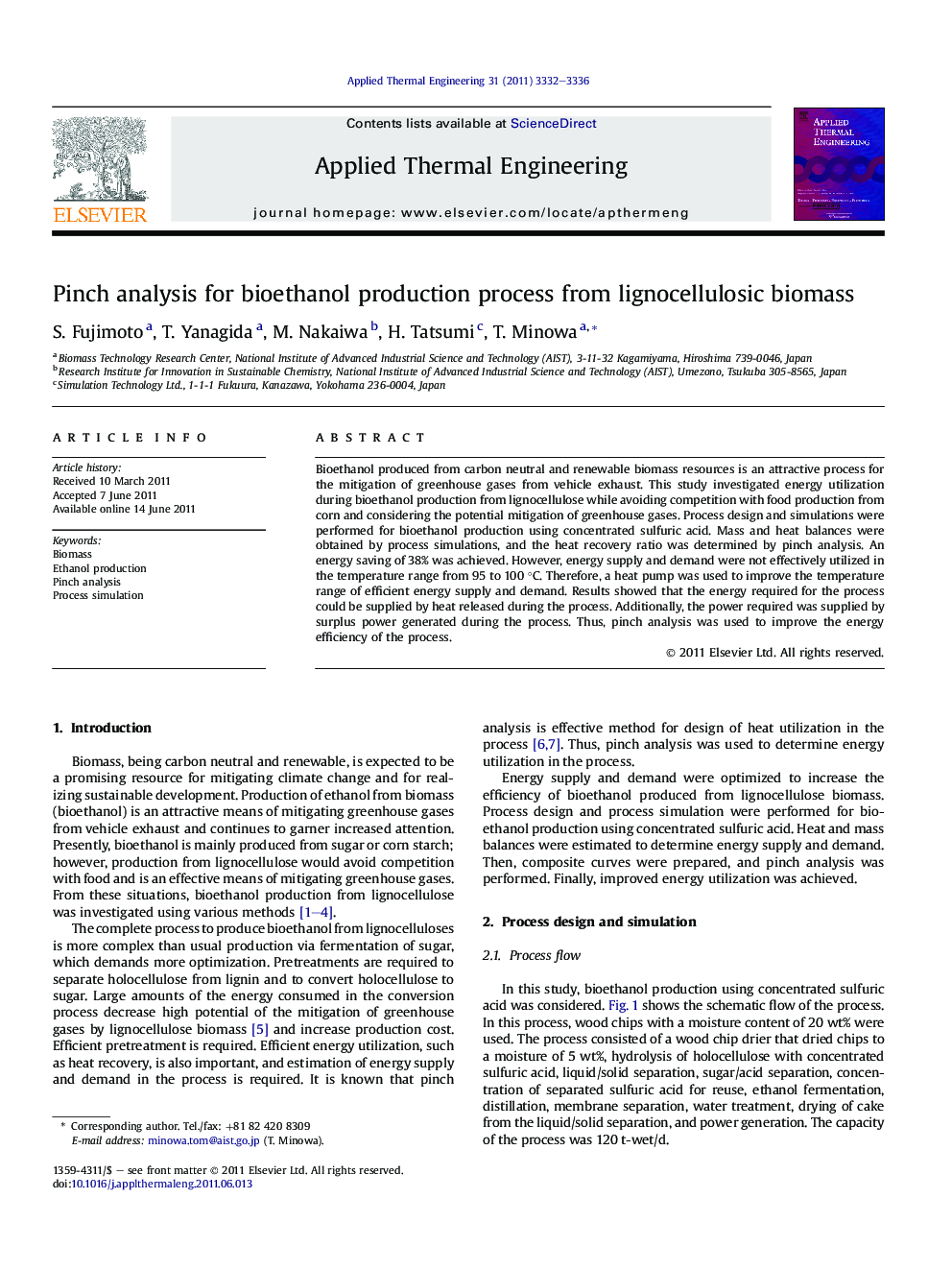| Article ID | Journal | Published Year | Pages | File Type |
|---|---|---|---|---|
| 647670 | Applied Thermal Engineering | 2011 | 5 Pages |
Bioethanol produced from carbon neutral and renewable biomass resources is an attractive process for the mitigation of greenhouse gases from vehicle exhaust. This study investigated energy utilization during bioethanol production from lignocellulose while avoiding competition with food production from corn and considering the potential mitigation of greenhouse gases. Process design and simulations were performed for bioethanol production using concentrated sulfuric acid. Mass and heat balances were obtained by process simulations, and the heat recovery ratio was determined by pinch analysis. An energy saving of 38% was achieved. However, energy supply and demand were not effectively utilized in the temperature range from 95 to 100 °C. Therefore, a heat pump was used to improve the temperature range of efficient energy supply and demand. Results showed that the energy required for the process could be supplied by heat released during the process. Additionally, the power required was supplied by surplus power generated during the process. Thus, pinch analysis was used to improve the energy efficiency of the process.
► Effective energy utilization of bioethanol production was studied by using pinch analysis. ► It was found that energy was not effectively utilized in the temperature range from 95 to 100 °C. ► Use of a heat pump was considered to improve the ineffective utilization. ► Then, remarkable energy savings could be achieved by it. ► Pinch analysis effectively improved the energy efficiency of the bioethanol production.
